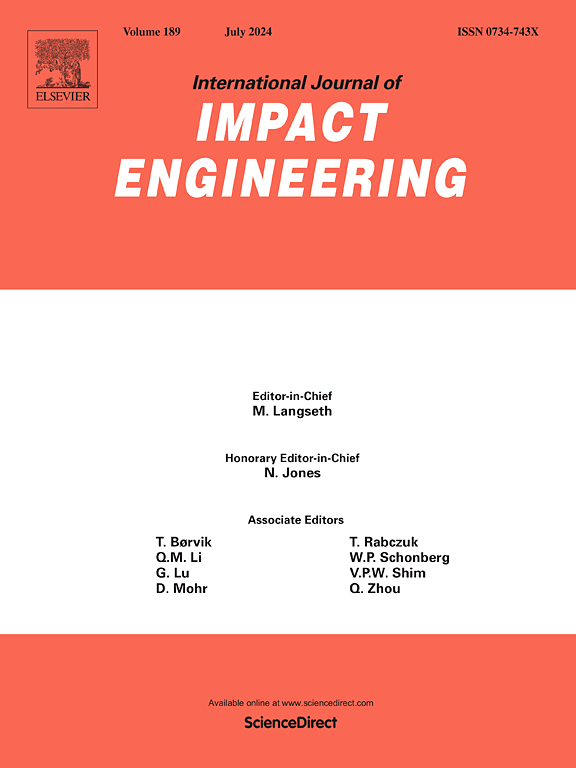Analytical and numerical models to predict the shape of incident pulse in split-Hopkinson bar experiments
IF 5.1
2区 工程技术
Q1 ENGINEERING, MECHANICAL
International Journal of Impact Engineering
Pub Date : 2024-09-14
DOI:10.1016/j.ijimpeng.2024.105103
引用次数: 0
Abstract
In typical split-Hopkinson pressure bar experiments (SHPB), the striker bar impacts the incident bar via discs made from soft materials such as copper. These discs, also called pulse shapers, are used (i) to eliminate the high frequency components of the incident pulse, (ii) to obtain a finite rise time of the incident pulse and (iii) to obtain a constant strain rate. Although these pulse shapers have been used for over decades in SHPB experiments, no analytical solutions or simple models are available that can predict the incident pulse as a function of the striker velocity, pulse shaper geometry and material parameters. Assuming that the pulse shaper is a rigid-linearly hardening material, we derive the analytical solution for the incident pulse when the rise time of the incident pulse is less than twice the time taken for a longitudinal wave to travel along the length of the striker. For larger rise times, we additionally assume that the striker is rigid to obtain a simple numerical model to predict the incident pulse in the presence of a pulse shaper. Both these models are validated against numerical simulations and experiments to demonstrate their accuracy.
预测分裂霍普金森棒实验中入射脉冲形状的分析和数值模型
在典型的分离式霍普金森压力棒(SHPB)实验中,撞击棒通过铜等软材料制成的圆盘撞击入射棒。这些圆盘也称为脉冲整形器,用于:(i) 消除入射脉冲的高频成分;(ii) 获得入射脉冲的有限上升时间;(iii) 获得恒定的应变率。虽然这些脉冲整形器已在 SHPB 实验中使用了数十年,但目前还没有分析解决方案或简单模型可以预测入射脉冲与冲锋速度、脉冲整形器几何形状和材料参数之间的函数关系。假设脉冲整形器是一种刚性线性硬化材料,当入射脉冲的上升时间小于纵波沿冲锋器长度传播时间的两倍时,我们得出入射脉冲的解析解。对于较大的上升时间,我们还假设击剑是刚性的,从而得到一个简单的数值模型来预测脉冲整形器存在时的入射脉冲。我们通过数值模拟和实验对这两个模型进行了验证,以证明它们的准确性。
本文章由计算机程序翻译,如有差异,请以英文原文为准。
求助全文
约1分钟内获得全文
求助全文
来源期刊

International Journal of Impact Engineering
工程技术-工程:机械
CiteScore
8.70
自引率
13.70%
发文量
241
审稿时长
52 days
期刊介绍:
The International Journal of Impact Engineering, established in 1983 publishes original research findings related to the response of structures, components and materials subjected to impact, blast and high-rate loading. Areas relevant to the journal encompass the following general topics and those associated with them:
-Behaviour and failure of structures and materials under impact and blast loading
-Systems for protection and absorption of impact and blast loading
-Terminal ballistics
-Dynamic behaviour and failure of materials including plasticity and fracture
-Stress waves
-Structural crashworthiness
-High-rate mechanical and forming processes
-Impact, blast and high-rate loading/measurement techniques and their applications
 求助内容:
求助内容: 应助结果提醒方式:
应助结果提醒方式:


